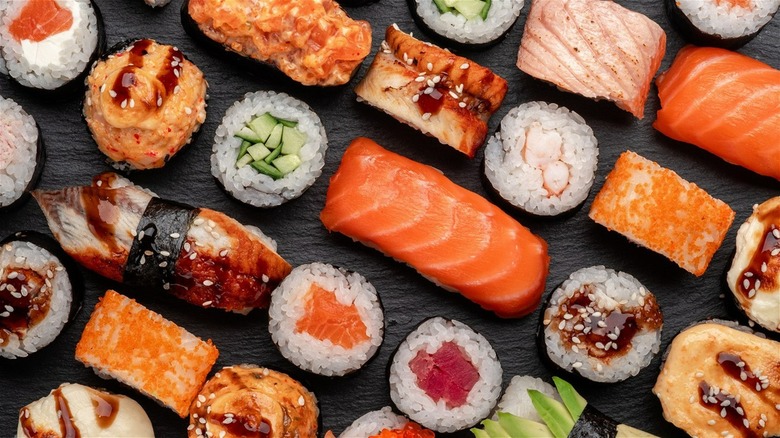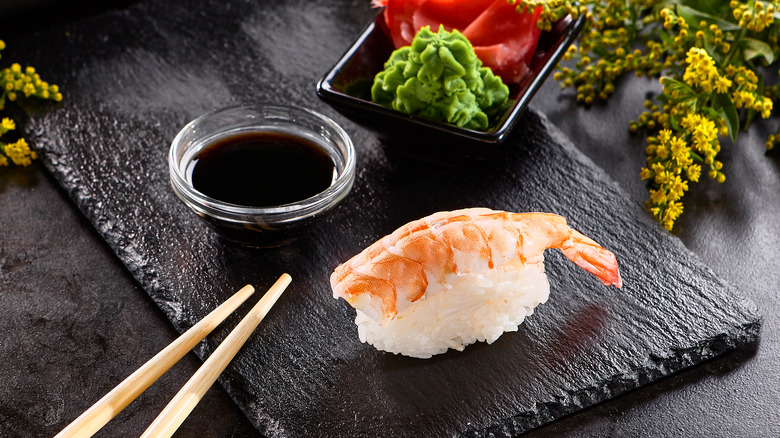The Traditional Way To Eat Sashimi And Nigiri
Sushi, in all its delicious and colorful forms, has cemented itself as a culinary art form in the world of gastronomy. This traditional Japanese delicacy was created way back in the 8th century, so it's had plenty of time to undergo changes in style, flavor, and presentation to become the modern sushi we enjoy today. Passionate sushi lovers will likely know the difference between nigiri and sashimi but might not know that each of these has different eating practices. While it's perfectly fine to cram sushi into your mouth until you're full — in fact, you're supposed to eat each piece whole — in terms of etiquette, you may have been eating your sushi wrong all along.
Nigiri stems from the verb "to grip," meaning the sushi is hand-made by pressing the rice and fish together. This is how sushi was created, and it's the most popular type served in Japan; as such, knowing its translation might make it easier to remember how to eat it. Sashimi is just a piece of raw fish, so it makes sense why you'd want to use chopsticks when eating it. However, nigiri can be eaten with your hands (assuming they're clean, of course). Many Japanese restaurants will give patrons a hot towel (called an oshibori) at the start of the dining experience for this very reason. Using your hands to eat nigiri is an exercise in authenticity, but there's also a correct dipping method that comes along with it.
To eat nigiri, lightly dip it upside down in soy sauce
While sashimi can be placed directly into soy sauce for an ultra-umami bite, dipping nigiri is a bit different because it contains rice, which will absorb liquid like a sponge and fall apart. You might be used to dunking your sushi, but soy sauce can easily overpower its intended flavor profile. Using your hands to eat nigiri makes it really simple to dip your sushi the right way, allowing you to flip the sushi over and give the fishy topping a light touch of soy sauce. If your nigiri is well-made, the rice might just fall apart anyway when using chopsticks, so a hands-on approach is the way to go. When you bring the nigiri to your mouth to take that first bite, make sure the tasty fish side touches your tongue first.
Rolled sushi is another story. Getting soy sauce on the rice is unavoidable in this case, and flipping it over is out of the question since many rolls have toppings that will simply plummet into your dipping sauce. A light dip into the soy sauce using chopsticks is the best method, as opposed to submerging part of the roll. There's an extensive array of ingredient combos and sushi types out there, so when following Japanese sushi etiquette, keep in mind that you should be able to taste each piece's one-of-a-kind flavors.

